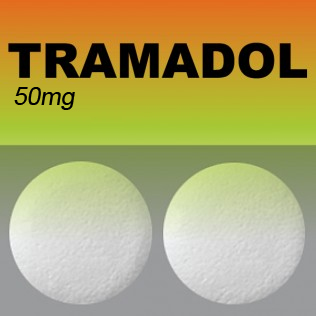Tramadol is the generic name for a prescription pain reliever sold under the brand names Ultram, Conzip, Rybix ODT, and Ultram ER.
Doctors prescribe tramadol to treat moderate to severe pain in adults.
Tramadol comes as a tablet, and as an extended-release tablet or capsule to treat around-the-clock pain.
It’s in a class of pain drugs called opiate narcotic analgesics, which work by changing the way your brain responds to pain. It may increase levels of the neurotransmitters norepinephrine and serotonin.
Ultracet is a combination drug, made from tramadol andacetaminophen.
The Food and Drug Administration (FDA) approved tramadol in 1995 for the drug company Janssen Pharmaceuticals under the brand name Ultram.
In 2002, the FDA approved a generic version of tramadol, which many companies now manufacture.
A 2014 study suggested that giving tramadol to people before surgery may help ease post-anesthesia shivering – a common complication that develops in people recovering from general anesthesia.
Tramadol ‘High’ and Abuse
Although tramadol is widely considered safe and has FDA approval, there have been many reports of abuse, because the drug can have opioid-like effects, giving users a narcotic “high.”
In 2010, Janssen and the FDA issued a revised warning for tramadol tablets, advising doctors not to prescribe the drug for people who are suicidal, at risk for addiction, take tranquilizers or antidepressants, have alcohol or drug abuse problems, or are depressed or emotionally disturbed.
In 2011, tramadol was linked to 20,000 emergency department visits around the country, according to a report in MedPage Today.
In Florida alone, there were 379 overdose deaths involving tramadol in 2011, a significant jump from 106 deaths recorded in 2003.
As a result of these and many other incidents, the Drug Enforcement Administration (DEA) classified tramadol as a controlled substance in 2014, subjecting the drug to stricter controls.
Tramadol Warnings
Tramadol may increase your risk for having a seizure.
This can occur at a normal dose but is more likely if you take more tramadol than prescribed.
You may be at greater risk if you are taking an antidepressant or another opioid pain reliever. You may also be at risk if you have a history of seizures, drug or alcohol abuse, or depression.
People who are suicidal or prone to addiction should not take tramadol. Those with a history of emotional disturbances (including depression or alcohol abuse) should consider taking non-narcotic analgesics instead.
Because tramadol increases the amount of serotonin in your brain, you may be at risk for a condition called serotonin syndrome if you combine tramadol with other medications that also raise serotonin levels, especially antidepressants.
Symptoms of serotonin syndrome include agitation, fever, nausea, muscle stiffness, lack of coordination, and/or loss of consciousness.
Tramadol may be habit-forming. Taking tramadol for a long time and in high doses may cause you to become tolerant of the drug and dependent.
This means that if you stop taking tramadol suddenly, you could have withdrawal symptoms, including sweating, nausea, muscle aches, insomnia, tremors, and anxiety.
Tramadol may cause decrease your ability to breathe, a condition called respiratory depression. Life-threatening respiratory depression can occur if you take too much tramadol.
You may be at greater risk for respiratory depression if you use other opioid pain medications, street drugs, alcohol, or tranquilizers, or if you have a history of head trauma or increased pressure in your brain.
You may not be able to take tramadol if you have severe asthma or any lung conditions that causes breathing problems.
Before starting tramadol, also tell your doctor if you have, or have had, any of the following:
- Head injury or stroke
- Seizures
- Liver disease, such as cirrhosis, or liver damage from past disease
- Digestive disease or digestive problems like constipation
- Kidney disease or related problems
- Any mental health conditions, such as depression, bipolar disorder, or others
- Thoughts of suicide
- Brain infection or brain tumor
- History of drug or alcohol abuse
Pregnancy and Tramadol
Tramadol may cause harm to a developing fetus.
If you’re a woman, let your doctor know if you are or may be pregnant. If you become pregnant while taking tramadol, tell your doctor right away.
In addition to the risk of harming a developing fetus, tramadol can cause dangerous withdrawal symptoms in newborns.
Tramadol also passes into breast milk, so don’t breastfeed while taking tramadol.
Anyone younger than 16 should not take tramadol.
Tramadol for Dogs and Cats
Tramadol is often used to treat pain in dogs and cats, especially post-surgery pain and chronic pain.
Because many non-steroidal anti-inflammatory drugs (NSAIDs) aren’t safe for use in cats, tramadol is a widely used alternative pain medication for cats.
In dogs and cats, tramadol may cause constipation, upset stomach, or decreased heart rate. An overdose of tramadol may cause seizures and constricted pupils.
Tramadol Side Effects
If you have any side effects from tramadol, let your doctor know right away.
The most common side effects are dizziness, nausea, constipation, and headache.
If you have any of these serious side effects of tramadol, call your doctor right away, get emergency help, or call 911.
- Seizures
- Trouble breathing
- Symptoms of serotonin syndrome: agitation, fever, nausea, muscle stiffness, lack of coordination, or loss of consciousness
- Chest pain
- Rapid heartbeat
- Extreme drowsiness
- Fainting
- Swelling of the face, tongue, throat, or extremities
- Hallucinations
- Severe rash
- Thoughts of suicide
Other side effects of tramadol include:
- Sleepiness
- Vomiting
- Itching
- Sweating
- Feeling agitated, nervous, or high
- Indigestion
- Dry mouth
- Diarrhea
- Sleeplessness
- Tremor
- Loss of appetite
If you are over age 65, you may be at higher risk for side effects from tramadol, especially digestive side effects like constipation.
People over age 75 may have to take a lower dose of tramodol than is typically prescribed.
Tramadol Interactions
Tramadol and Drug Interactions
Some drugs may affect the way tramadol works, and tramadol may affect other drugs you are taking.
Let your doctor know about all drugs you are taking, including any illegal, recreational, or street drugs; over-the-counter (OTC) drugs; and any herbs, herbal preparations, or supplements.
Types of drugs known to interact with tramadol include:
- Blood thinners such as warfarin (Coumadin)
- Antifungal medications, including ketoconazole (Nizoral)
- Antibiotics such as erythromycin (E.E.S., E-Mycin, Erythrocin) and linezolid (Zyvox)
- Drugs used to treat bipolar disorder and schizophrenia, including lithium (Lithobid)
- Depression medications, including monoamine oxidase (MAO) inhibitors like isocarboxazid (Marplan) and phenelzine (Nardil); serotonin norepinephrine reuptake inhibitors (SNRIs) such as desvenlafaxine (Pristiq) and duloxetine (Cymbalta); tricyclic antidepressants like amitriptyline; and selective serotonin reuptake inhibitors (SSRIs) such as citalopram (Celexa) and fluoxetine (Prozac, Sarafem)
- Heart medications, including digoxin (Lanoxin)
- Medications for anxiety, such as paroxetine (Paxil, Pexeva) and sertraline (Zoloft)
- Other pain medications, such as oxycodone (Roxicodone)
- Migraine headache medications, including almotriptan (Axert), eletriptan (Relpax), and frovatriptan (Frova)
- Medication for seizures, such as carbamazepine (Equetro, Tegretol)
- Muscle relaxants, including cyclobenzaprine (Flexeril)
- Quinidine
- Rifampin (Rifadin, Rifamate, Rimactane)
- St. John’s wort
Tramadol and Other Interactions
Tramadol can make you sleepy and dizzy.
Don’t drive or participate in any dangerous activities until you know how tramadol affects you.
Tramadol and Alcohol
Don’t drink alcohol or use street or illegal drugs while taking tramadol.
Use of alcohol while taking tramadol can increase your risk of experiencing dangerous side effects.
Tramadol Dosage
Your dose of tramadol will depend on your level of pain and how you react to the medication.
Your doctor may start at a low dose and gradually increase it to find the dose that works for you.
This is a typical dosing schedule for someone just starting to take tramadol regular-release tablets:
- Your doctor will most likely start with 25 milligrams (mg) each morning.
- That may increase by separate doses of 25 mg every three days to reach a maximum dose of 100 mg a day (25 mg, four times a day), depending on how much the medication is relieving your pain.
- If necessary, your doctor may increase by separate doses of 50 mg every three days to reach a maximum of 200 mg a day (50 mg, four times a day).
- A normal adult dose should not go above 400 mg a day.
- For someone with cirrhosis (liver damage), the daily dose should not be above 100 mg in a 24-hour period.
- For someone with kidney disease, the daily dose should not be above 200 mg.
- For someone older than 75, the daily dose should not be above 200 mg.
You can take regular and dissolving tablets with or without food about every four to six hours as needed.
Before you take the tramadol tablets, make sure your hands are dry and remove the medication from the packaging very carefully.
Don’t push dissolvable tablets through the foil packaging. Place the tablet on your tongue immediately.
You should usually take the long-acting, extended release tablets or capsules at the same time every day.
Don’t chew, open, split, or crush the medication. Swallow tramadol whole with a glass of water.
Tramadol Overdose
An overdose of tramadol can cause difficulty breathing and may be fatal.
Symptoms of tramadol overdose include:
- Respiratory depression
- Shallow breathing
- Narrowed pupils
- Extreme weakness
- Dizziness
- Cold and clammy skin
- Slowed heartbeat
- Loss of consciousness
If you think you have overdosed on tramadol, or if someone else may have overdosed, call 911 immediately.
Missed Dose of Tramadol
It’s extremely important that you take tramadol exactly as directed by your doctor. Don’t take more or less.
Don’t stop taking tramadol suddenly because doing so can cause a dangerous withdrawal reaction.
If you miss a dose of tramadol, take the missed dose as soon as you remember.
If it’s almost time for your next dose, skip the missed dose and continue your regular dose schedule.
Don’t double your dose to make up for the missed one, because you could experience dangerous side effects of tramadol if you do.




